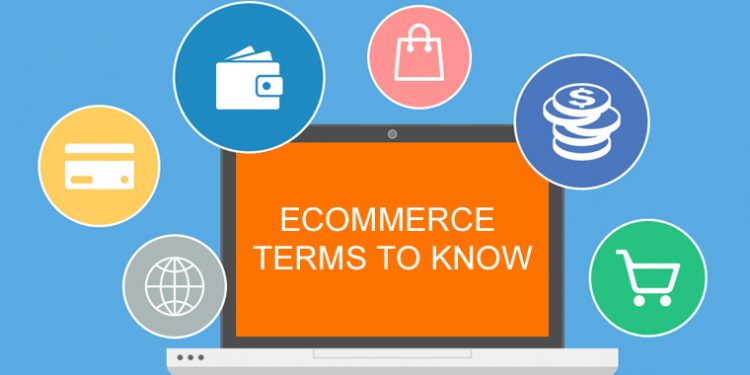
If you are new to eCommerce it is important to have some familiarity with understanding eCommerce terms. Here are some of the common eCommerce terms you should know:
Platform & System Terms
CDN: Content Delivery Network are localized servers that allow businesses to serve up content closer to the end user. Traditionally if you are hosting your website or web content in California, then no matter where a user is accessing your site the digital assets are loading from a California server. A wordpress web hosting company on the other hand allows you to host your website in California, but it allows you to save a cached (copy) version of your web assets on dozens, hundreds or even thousands of servers around the country. When a user hits your website from New York, your website assets are loading from a server geographically close to New York, results in a faster load time for the user and less stress on your main California based web server.
CMS: Content Management System is an application that allows you to manage your website content without requiring the use of code. The most popular CMS on the market today is WordPress but there are many on the market, both free and paid. Most eCommerce platforms will also come out of the box with a basic CMS.
CRM: Customer Relationships Management system refers to an application that manages customer data and all interactions made with that customer. Popular CRM systems include Salesforce, Zoho and SugarCRM. CRM systems allow business to track customer service tickets, refunds, phone calls, and all other attributes associated with a customer.
ECommerce Platform: An eCommerce platform is an application that supports all necessary features to allow its owner to transact online. This includes product management, content management, customer management, promotion management, order management, inventory management, payment settings, shipping settings, tax logic and usually other settings as well. Today the most popular eCommerce platforms include Magento, Shopify and WooCommerce. Prices can range from $29 per month to millions of dollars.
ERP: Enterprise Resource Planning systems are robust systems that allow large businesses to run their entire organization from one system. Basically an ERP is an accounting system, IMS, POS, CRM all in one. Popular ERP systems include Oracle, SAP, Microsoft Dynamics and Netsuite.
Hosted vs. Self-Hosted: An eCommerce platform is either going to be self-hosted, meaning you basically get the source code and you have to host it yourself somewhere (e.g. RackSpace, AWS, etc.) or the platform will be a SaaS model where they host it for you and you pay a monthly hosting fee. Think of Self-Hosted as you are buying a house, so you can do whatever you want to the code because you own it vs. Hosted is like renting an apartment. You can usually change the look and feel (interior design) but you can’t really change the functionality because you don’t own the code.
IMS: Inventory Management System are applications that keep track of warehouse inventory. IMS track inventory counts as well as inventory location. Advanced IMS can even track serialized inventory so they can track down a specific unit, not just a SKU.
Merchant Account: A merchant account is just a bank account that accepts credit card payments. To support an eCommerce business you need both a merchant account and a payment gateway.
Payment Gateway: A payment gateway is basically an online escrow accounts that acts as the middle man between the buyer and the seller. When a credit card is authorized the payment gateway verifies the buyer is the authorized user of that credit card and hit holds the funds so that credit cannot be used elsewhere until the transaction is complete. Once the payment is captured (charged) then the payment gateway withdraws the funds from the credit card and basically holds it in escrow for a short time. That way if there is an issue with the transaction the funds can be release back to the credit card. Once the transaction clears, the funds are then released to the sellers merchant account. This allows transactions and refunds to be more seamless, it is much harder to get a refund once the funds are already deposited into the sellers merchant account. Popular payment gateways include Authorize.net, Chase Paymentech, Stripe, First Data, etc.). Payment gateways are usually one of the more confusing terms when dealing with understanding eCommerce terms.
POS: Post of Sale systems is traditionally a cash register, but today it could just be a tablet with a card reader. It is basically the point where a customer will physically transact with a business.
SaaS: Software as a service refers to any application that is used via online access, if you pay a monthly fee and you access the application through a browser you are using a SaaS product.
Channel Management Software:
Advanced eCommerce Feature Terms
Reductive/Faceted Navigation: Both terms refer to the feature where you allow users to filter products based on product attributes (e.g. price, rating, material, color, size or any other specific data point). An easy way to understand reductive/faceted navigation is when you land on an Amazon results page and you look at the left navigation, that is faceted navigation. This is extremely useful when you have a large product catalog and you have the data requires to power such a filtering system.
Fuzzy Search: Another confusing term when understanding eCommerce terms, fuzzy search is a type of search algorithm that is smart enough to yield related search queries, even though they may not directly match the specific searched keywords. A traditional search tool usually looks at the exact keywords, then searches the website database to find those exact terms. Depending on the logic setup in the search tool, it might look at various attributes (e.g. title, description, category, specification, etc.) and whichever product/content has more matching results, that product/content is then brought higher in the search results. Fuzzy search works the same by but instead of just providing results that have exact matches, it will also find other results that have similar characteristics. For example, if you search for “shoes” a traditional search result would only show results that actually have “shoe” in the title, description, etc. In fuzzy search, a search for “shoes” would provide the same results, but in addition you might have results that match terms like “shoe, boots, flip slops, etc” because the fuzzy search engine is smart enough to realize that those other terms are found in product/content that also have the word “shoes” in it. Likewise it can do the same for miss spelled words. Both Google and Amazon both use Fuzzy search because it provides a more relevant search results list than traditional exact match search.
Shopping Cart Abandonment: This feature refers to the ability to identify what items are left in a cart after a use leaves the site, then market to them that same item in the hopes to close the sale. This is usually done via email but you can also use SMS and push notifications. Some eCommerce platforms come with shopping cart abandonment functionality but there are also 3rd party systems you can use to take advantage of this feature.
Personalized Shopping: Also known as personalization, personalized shopping refers to the functionality where an eCommerce platform supports customer segmentation and dynamic content display. This allows sellers to provided a personalized shopping experience to customers based on their behavior (e.g. what they’ve purchased or viewed) or based on user attributes (e.g. birthday, gender, traffic source, etc.). Having the ability to display relevant content to the right person has a huge impact on conversion. Magento Enterprise Edition is a good example of an eCommerce platform that comes with Personalized Shopping out of the box.
3PL: Third Party Logistics refers to using a 3rd party service provide to warehouse and fulfill orders. Perhaps the most well known 3PL would be Fulfillment By Amazon.
Sales Channel Terms
Product Feed: A product feed is usually an XML format file that sends your product data (e.g. SKU, Title, Price, Image, URL, etc.) to a 3rd party site or advertising channel. This allows your products to show up and link back to your product pages. An example of a solution that would require a product feed is Google Shopping.
Paid Search: Refers to online advertising that displays when a user searches for a term on a search engine like Google. The most popular form of Paid Search is Google AdWords, which is all the sponsored results you see when you do a Google search.
CSE: Comparison Shopping Engine is an online directory that shows different products offered by various sellers in comparison to each other. Popular CSEs include Google Shopping, Price Grabber and Nextag.
Marketplace: An online marketplace is a platform where multiple sellers can offer their products for sale but the platform acts as a mediator to ensure the transaction goes through. Popular marketplaces include Amazon Marketplace, ebay, Rakuten, Newegg, Sears and Walmart marketplace.
Security Terms
SSL: Secure Socket Layer is the standard security technology for establishing an encrypted link between a web server and a browser. It basically means the information a user types into your site is secure.
PCI Compliance: Perhaps one of the most confusing concepts when understanding eCommerce terms, PCI compliance is a set of security standards set forth by the major credit card companies to ensure an eCommerce seller is protecting its customer’s credit card information. This includes things like separating web server from data base server and not allowing employees to have access to customer credit card information outside of those that require such access. For a more in-depth understanding go to https://www.pcicomplianceguide.org/faq/
PII: Personal Identifiable Information is any piece of information that can identify an individual (e.g. first name, last name, email, telephone, address, SSN, etc.)
Data Transfer Terms
FTP: File Transfer Protocol is a form of transferring data from one server to another or from a server to a computer using files and folders. Similar to using Drop Box, you are either pushing data or pulling data to a specific folder destination. Many times FTP integrations are automated using Cron Jobs.
Cron Job: A time based operation usually used when transferring data via API or FTP. Cron Jobs can be set to any increment of time.
API: Application Programming Interface is a set of defined functions and methods for interfacing with the underlying operating system or another program or service running on the computer. Most SaaS based applications have an open API which allows other systems to integrate and push/pull data as needed. Many legacy systems don’t have an API, so they rely on more traditional forms of integration like FTP.
- COVID-19 Has Forced Many Business To Ask, How Do I Start Selling Online? - May 25, 2020
- Applying AI Technology To Taco Bell - January 25, 2020
- ONWARD 2018 Taco Bell Brand Award - November 11, 2018


3 Responses
[…] Download Image More @ ecomsultant.com […]
1appeared
[…] clindamicina en gel[…]
clindamicina en gel
Comments are closed.